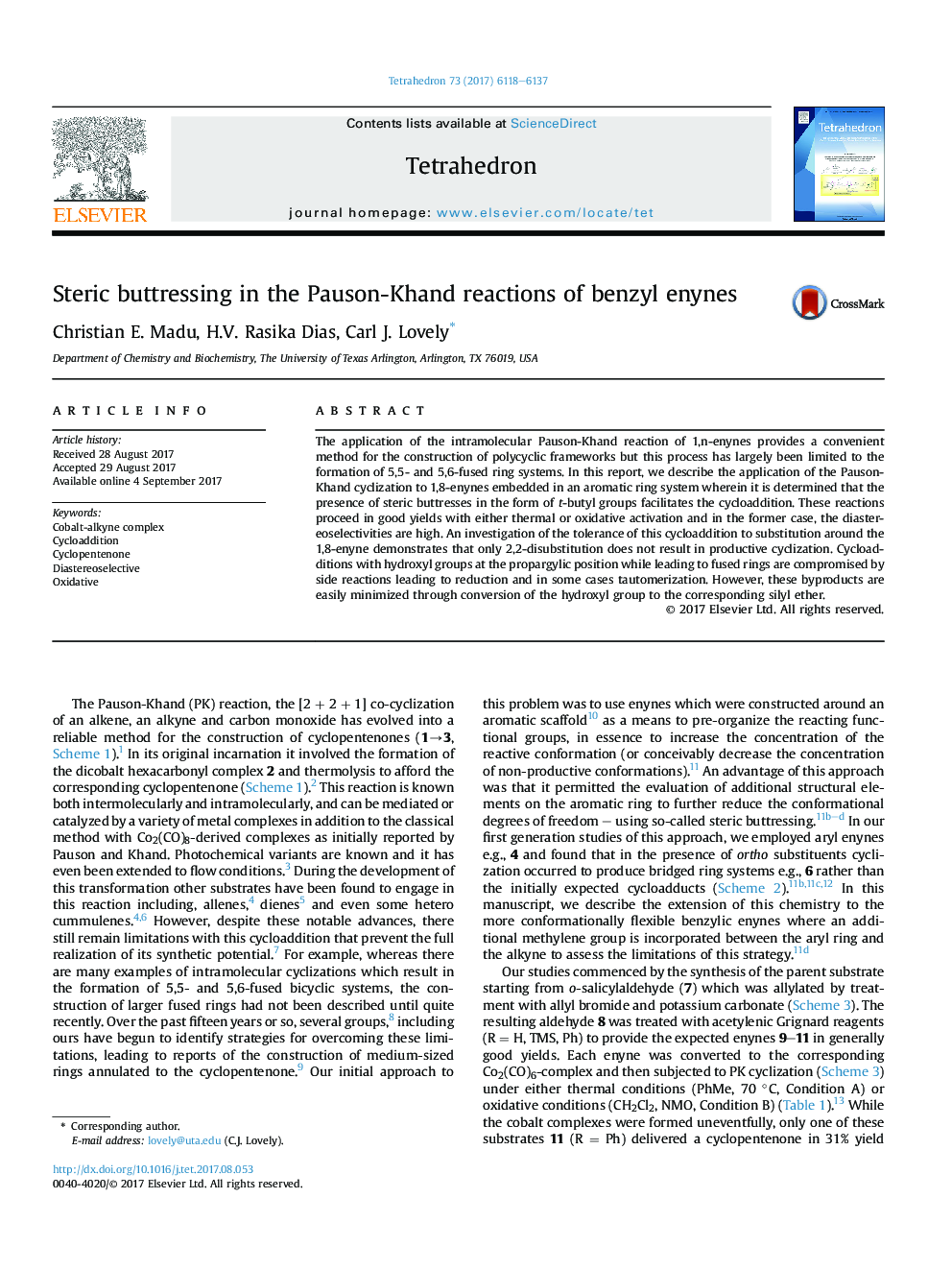| Article ID | Journal | Published Year | Pages | File Type |
|---|---|---|---|---|
| 5211868 | Tetrahedron | 2017 | 20 Pages |
The application of the intramolecular Pauson-Khand reaction of 1,n-enynes provides a convenient method for the construction of polycyclic frameworks but this process has largely been limited to the formation of 5,5- and 5,6-fused ring systems. In this report, we describe the application of the Pauson-Khand cyclization to 1,8-enynes embedded in an aromatic ring system wherein it is determined that the presence of steric buttresses in the form of t-butyl groups facilitates the cycloaddition. These reactions proceed in good yields with either thermal or oxidative activation and in the former case, the diastereoselectivities are high. An investigation of the tolerance of this cycloaddition to substitution around the 1,8-enyne demonstrates that only 2,2-disubstitution does not result in productive cyclization. Cycloadditions with hydroxyl groups at the propargylic position while leading to fused rings are compromised by side reactions leading to reduction and in some cases tautomerization. However, these byproducts are easily minimized through conversion of the hydroxyl group to the corresponding silyl ether.
Graphical abstractDownload high-res image (110KB)Download full-size image
